Introduction
Ensuring the correct tension in your lawnmower’s deck belt is crucial for maintaining its efficiency and extending its lifespan. The Deck Belt Tension Adjustment, a key component in most riding mowers, is responsible for transmitting power from the engine to the blades.
Proper belt tension is vital because it directly influences the mower’s operational performance and the quality of the cut. If the tension is too loose, the belt might slip, causing the blades to rotate ineffectively.
On the other hand, if the belt is too tight, it could lead to excessive wear and premature failure of both the belt and the mower’s bearings. By maintaining the right tension, you can ensure that your mower operates smoothly and your lawn looks consistently well-trimmed.
Understanding Deck Belt Tension
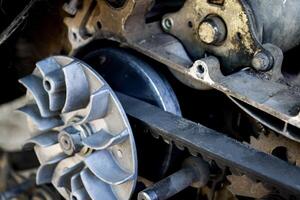
Deck belt tension refers to how tight or loose the belt is on your lawnmower. It plays a pivotal role in transferring the rotational force from the mower’s engine to the blades that cut the grass.
The right amount of tension is crucial; it ensures that the belt does not slip off or wear out prematurely while enabling efficient blade performance for a neat and even lawn cut. Common signs that indicate improper belt tension include slipping belts, which might squeal or emit a burning smell, and uneven cuts in your lawn, where you see patches of grass that appear taller than the rest.
Recognizing these signs early can prevent further mechanical issues and maintain the mower’s optimal functionality.
Tools Needed for Adjustment
Before you start adjusting the deck belt tension on your lawnmower, it’s essential to gather the right tools to ensure the job is done effectively and safely. Typically, you will need:
- Wrench set: To adjust nuts and bolts that hold the adjustment mechanism in place.
- Screwdriver: Sometimes necessary for securing covers or panels.
- Torque wrench (optional, but recommended): To tighten bolts to the manufacturer’s specified torque settings, ensuring they are neither too tight nor too loose.
Safety Tips:
- Turn off the mower: Ensure the mower is off and the key is removed.
- Disconnect the spark plug: This prevents the mower from starting accidentally while you are working on it.
- Wear gloves: Protect your hands from sharp edges and the potential pinch points while working.
- Use eye protection: When working under the mower, debris or small parts could cause eye injury.
Step-by-Step Guide to Adjusting Deck Belt Tension
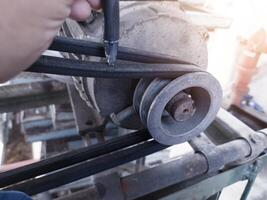
Step 1: Locate the Adjustment Mechanism
- Each mower model has its adjustment mechanism located differently. Consult your mower’s manual for specific details. Generally, it’s near the mower deck and involves an adjustable bolt or lever.
Step 2: Loosen the Adjustment Bolt or Lever
- Use your wrench to slightly loosen the bolt or lever that controls the belt’s tension. This is necessary to adjust the belt’s tightness without resistance.
Step 3: Adjust the Tension
- Adjust the tension by tightening or loosening the belt. If the belt was slipping, tighten it; if it was too tight, loosen it. Always aim to align with the manufacturer’s recommended tension settings, typically found in the mower’s manual.
Step 4: Check for Proper Tension
- Press the belt with moderate force; it should deflect slightly but not feel loose. There should be about a half-inch of give for proper tension.
Step 5: Tighten the Adjustment Bolt or Lever
- Once the desired tension is achieved, retighten the adjustment bolt or lever using your wrench. Ensure it is secure but not overly tight, as this could damage the bolt or the mower’s frame.
Following these steps will help you maintain the optimal performance of your lawnmower by ensuring the deck belt is properly adjusted, enhancing both the effectiveness of your mowing and the lifespan of the mower components.
Troubleshooting Common Issues
Properly diagnosing deck belt tension issues is key to maintaining your lawnmower’s performance. Here’s how to identify and solve common tension-related problems:
Diagnosing Tension Issues:
- Too Loose: A belt that is too loose will often slip on the pulleys, leading to inefficient blade rotation. This may result in a squealing noise or the mower failing to cut grass effectively. You might also notice the belt appears saggy or disengages frequently.
- Too Tight: An overly tight belt puts excessive strain on the mower’s bearings and pulleys, which can lead to premature wear and failure. Signs include a high-pitched whining noise when the mower is running and faster than usual wear on the belt.
Solutions:
- For a Loose Belt: Tighten the adjustment bolt or lever incrementally until the belt has minimal slack without being overly taut. Check the manufacturer’s manual for specific guidance on belt deflection.
- For a Tight Belt: Loosen the adjustment bolt or lever slightly. Check the belt’s flexibility; it should not be immovable or strained over the pulleys. Again, refer to your mower’s manual for precise tension settings.
Preventive Maintenance and Tips
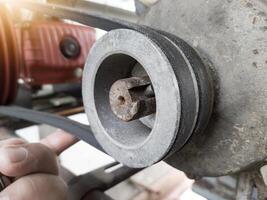
Maintaining your lawnmower’s deck belt is essential for prolonged mower health and performance. Here are some preventive maintenance tips and guidelines for checking and adjusting deck belt tension:
Maintenance Tips:
- Regular Inspection: Before each use, visually inspect the belt for signs of wear, cracks, or fraying. Replace the belt if any damage is evident.
- Clean the Deck: After each mowing, clean the mower deck to remove grass clippings and debris. This prevents buildup that can affect belt movement and tension.
- Lubricate Pulleys: Occasionally lubricate the pulley bearings to ensure smooth belt movement. Use a suitable lubricant as recommended by the mower manufacturer.
Frequency of Checks and Adjustments:
- Regular Use: Check the belt tension every month during the mowing season, especially if you use your mower frequently. Adjust as necessary to maintain optimal performance.
- Seasonal Adjustment: At the start and end of the mowing season, thoroughly check and adjust the deck belt tension. This is also a good time to inspect for any wear or damage.
By following these guidelines, you can keep your deck belt in optimal condition, ensuring your lawnmower operates efficiently and effectively season after season.
Conclusion
Maintaining proper deck belt tension is crucial for ensuring your lawnmower operates at peak efficiency and safety. Proper tension helps to deliver consistent, high-quality cuts and extends the life of both the belt and the mower itself by reducing unnecessary strain on its components. Regular checks and adjustments are not only essential for optimal mower performance but also for preventing breakdowns that could lead to costly repairs.
It is advisable to incorporate deck belt inspection and adjustment into your regular lawn mower maintenance routine. By doing so, you can catch and rectify issues early, maintaining the mower’s efficiency and ensuring it remains a reliable tool for keeping your lawn beautiful and well-manicured. Remember, a little attention and care can significantly enhance the performance and longevity of your lawnmower.
FAQs: Deck Belt Tension Adjustment
Q1: How often should I check the tension of my mower’s deck belt?
- A1: It’s recommended to check the tension of your deck belt at least once a month during the mowing season, especially if you use your mower frequently. Additionally, always check the tension at the start and end of the mowing season.
Q2: What tools do I need to adjust the deck belt tension?
- A2: The basic tools required for adjusting the deck belt tension typically include a wrench set and a screwdriver. For more precise adjustments, a torque wrench is also beneficial to ensure bolts are tightened to the manufacturer’s specifications.
Q3: What are the signs of an improperly tensioned deck belt?
- A3: Common signs include a slipping belt, which may make a squealing noise or result in uneven grass cuts. An overly tight belt might emit a high-pitched whining noise and cause the belt to wear out prematurely.
Q4: What should I do if the belt keeps slipping even after adjusting the tension?
- A4: If the belt continues to slip after proper adjustment, it may be worn out or damaged and should be replaced. Also, check the condition of the pulleys and the alignment of the belt system, as these can also contribute to slipping.
Q5: Can improper belt tension affect the lifespan of my mower?
- A5: Yes, improper tension can significantly affect the lifespan of your mower. A too tight belt can strain the engine and bearings, while a too-loose belt can lead to inefficient cutting and increased wear and tear on the belt and pulleys.
Q6: Is there a specific way to measure belt tension accurately?
- A6: Belt tension is typically measured by pressing down on the belt between the pulleys. The belt should have about a half-inch of give for proper tension. For more specific measurements, refer to your mower’s owner manual or use a belt tension gauge tool.
Q7: How do I prevent my deck belt from wearing out too quickly?
- A7: Regular maintenance, including proper tension adjustment, regular cleaning of the mower deck, and lubrication of the pulleys, can help extend the life of your deck belt. Also, avoid mowing over rough terrain that can cause extra stress and potential damage to the belt and other mower components.
Read more about lawn mower articles
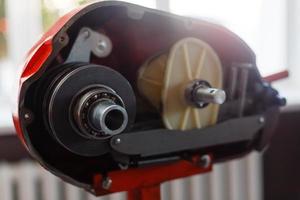








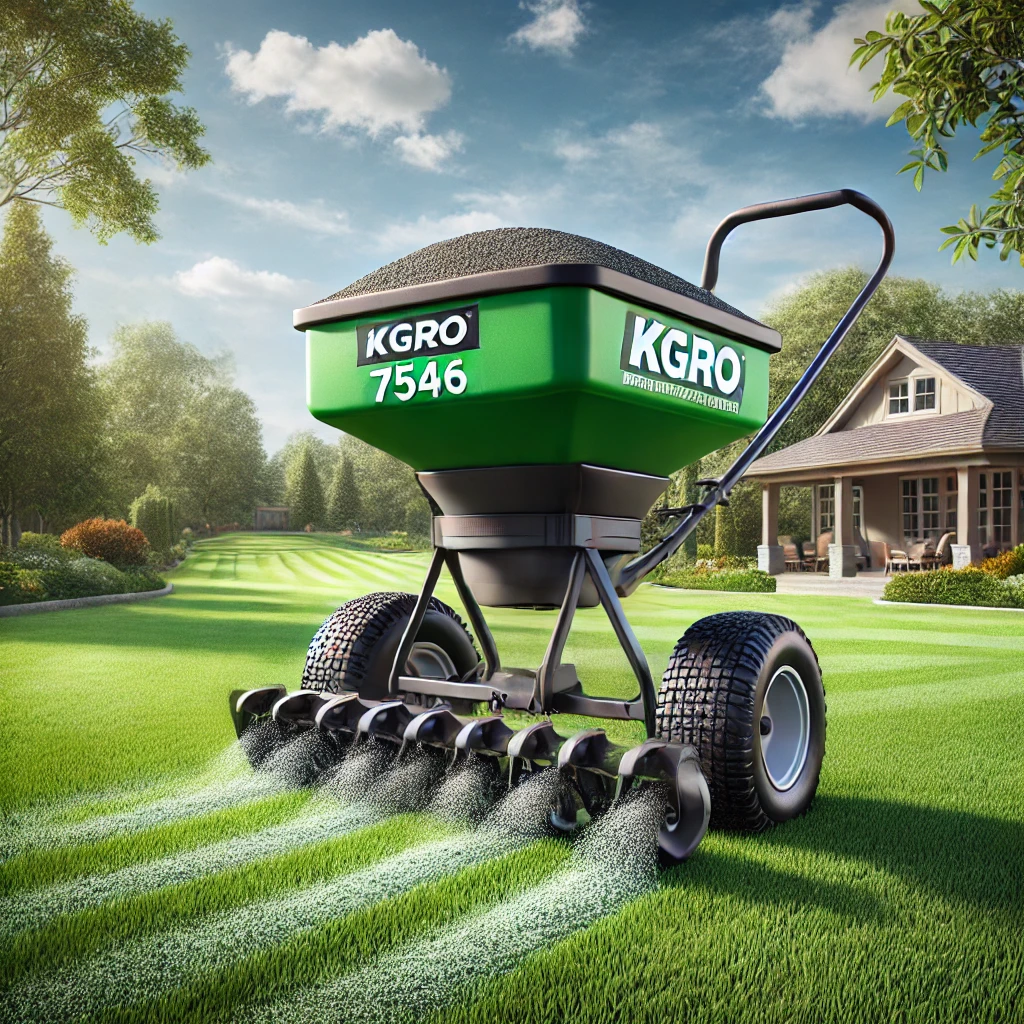

Leave a Reply